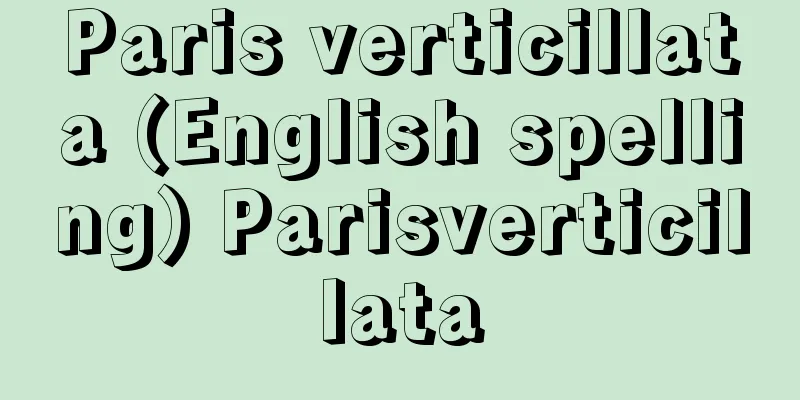Golden section - ougonbunkatsu

|
Dividing a line segment into golden ratios. The golden ratio is the ratio of the lengths of two sides of a rectangle, such that when a square, whose shorter side is removed from the rectangle, is created, the remaining rectangle is similar to the original rectangle. Take rectangle ABCD and square ABB'A' as shown in If rectangle ABCD and rectangle A'B'CD are similar, then B' divides line segment BC into golden sections. Now, if the length of one side AB of rectangle ABCD is 1, and the length of AD is x, then, To construct the golden section of a line segment, do as follows. First, erect a perpendicular line half the length of the line segment at one end to create a right-angled triangle. Next, subtract half of the original line segment from the hypotenuse and place the remaining length on the original line segment. This completes the golden section ( ). To construct a rectangle with the golden ratio, do as follows. Take a square and divide it into two rectangles by connecting the midpoints of the opposite sides. Extend one side of the rectangle from the midpoint of the square by the length of its diagonal to complete the rectangle ( ). [Toshio Shibata] Golden ratio and Fibonacci sequenceThe Fibonacci sequence is a sequence in which the first and second terms are 1, and the third and subsequent terms are each created by taking the sum of the previous two terms. 1, 1, 2, 3, 5, 8, 13, 21, ... If you pick up a pine cone and observe it, you will see two intersecting spirals, one right-handed and one left-handed, with 8 and 5 strands in each. 8 and 5 are adjacent terms in a pair of the Fibonacci sequence. A pineapple fruit and a chrysanthemum flower also contain two intersecting spirals, with the numbers of strands being 13 to 8 and 34 to 21, respectively. This is also the ratio of adjacent terms in the Fibonacci sequence. The golden ratio of 1.6 can be said to appear in the mysteries of nature. Rectangles with the golden ratio are said to be the most harmonious rectangles. Ancient Greek buildings, art, and crafts often have ratios and shapes that are close to the golden ratio or golden ratio rectangles. For example, the outline of the Parthenon in Athens is close to a golden ratio rectangle. It is also said that Leonardo da Vinci, the Italian all-rounder of the Renaissance, used golden ratio rectangles in his paintings. [Toshio Shibata] "Mathematics in the Arts" by Michael Holt, translated by Minoru Nishida (1976, Kinokuniya Shoten) "Symmetry" by Hermann Weil, translated by Kei Toyama (1957, Kinokuniya Shoten) [Reference] |©Shogakukan "> Golden section (Figure A) ©Shogakukan "> Golden section (Figure B) ©Shogakukan "> Golden section (Figure C) ©Shogakukan "> Golden section (Figure D) Source: Shogakukan Encyclopedia Nipponica About Encyclopedia Nipponica Information | Legend |
|
線分を黄金比に分けること。黄金比とは、ある長方形の2辺の長さの比で、その長方形から短い辺を1辺とする正方形を除いてできる残りの長方形が初めの長方形と相似になるものである。のように、長方形ABCDと正方形ABB'A'をとる。長方形ABCDと、長方形A'B'CDが相似であるなら、B'は線分BCを黄金分割する。いま、長方形ABCDの1辺ABの長さを1とし、ADの長さをxとすれば、 一つの線分の黄金分割を作図で求めるには次のようにすればよい。まず、その線分の一端で半分の長さの垂線を立て直角三角形をつくる。次に、その斜辺から初めの線分の半分を除いた残りの長さを初めの線分上にとる。これで黄金分割が完成する()。また、黄金比をもつ長方形を作図するには次のようにすればよい。一つの正方形をとり、それを対辺の中点を結んで二つの長方形に分ける。その長方形の対角線の長さだけ正方形の辺の中点から辺を延長すれば完成する()。 [柴田敏男] 黄金比とフィボナッチ数列フィボナッチ数列とは、初項と第2項が1で、第3項以降次々と前2項の和をとってつくられる数列である。 1,1,2,3,5,8,13,21,…… 松かさを手にとって観察すると、右巻きと左巻きの二つの渦巻が交錯しているのがみられるが、その筋の個数は8本と5本になっている。8と5はフィボナッチの数列の1組の相隣る項である。パイナップルの実や菊の花のなかにも二つの交錯する渦があり、その筋の個数はそれぞれ13対8、34対21となっている。これもフィボナッチ数列の相隣る項の比である。黄金比1.6は自然の神秘のなかにも現れているといえる。 黄金比をもつ長方形はもっとも調和のとれた長方形といわれている。古代ギリシアの建造物や美術・工芸品には、黄金比や黄金比長方形に近似する比や形をもつものがしばしば見受けられる。たとえば、アテネのパルテノン神殿の輪郭は黄金比長方形に近い。また、ルネサンス期イタリアの万能人であったレオナルド・ダ・ビンチは黄金比の長方形を活用して絵を描いたともいわれている。 [柴田敏男] 『マイケル・ホルト著、西田稔訳『芸術における数学』(1976・紀伊國屋書店)』▽『ヘルマン・ヴァイル著、遠山啓訳『シンメトリー』(1957・紀伊國屋書店)』 [参照項目] |©Shogakukan"> 黄金分割〔図A〕 ©Shogakukan"> 黄金分割〔図B〕 ©Shogakukan"> 黄金分割〔図C〕 ©Shogakukan"> 黄金分割〔図D〕 出典 小学館 日本大百科全書(ニッポニカ)日本大百科全書(ニッポニカ)について 情報 | 凡例 |
>>: Golden donkey - Golden donkey
Recommend
Shinto offerings - Jingishiryo
A research book written in preparation for the com...
River God - Kahaku
〘Noun〙① River god. God who protects rivers. Kahaku...
Corporate punishment - houjinshobatsu
Industrial pollution, corporate disasters, corrupt...
Barlovento
… In Europe, since the Middle Ages, it was though...
Protectorate - protectorate
A territory under the protection of a particular n...
Antifoaming agent
These agents are effective in preventing foaming,...
pseudorandomnumber
...When rolling a dice, (1) the probability of ea...
"Kintosho" - Kintosho
...In 1400, Motoshige became Kanze Daifu, but Zea...
Pebrine
A disease of silkworms. It is caused by the parasi...
Digital Audio
It means audio using digital technology and digita...
Wafnar, J.
… In the 17th and 18th centuries, citizen perform...
Texus baccata (English spelling)
… [Yukio Taniguchi]. … *Some of the terminology t...
Ten thousand pieces of paper - Yorozu no Fumihogu
Ihara Saikaku's Ukiyo-zoshi. In January 1696 ...
Bundled conductor
A method in which the conductor of a transmission ...
Baldassare Longhena
Italian architect. Born in Venice, he studied und...









